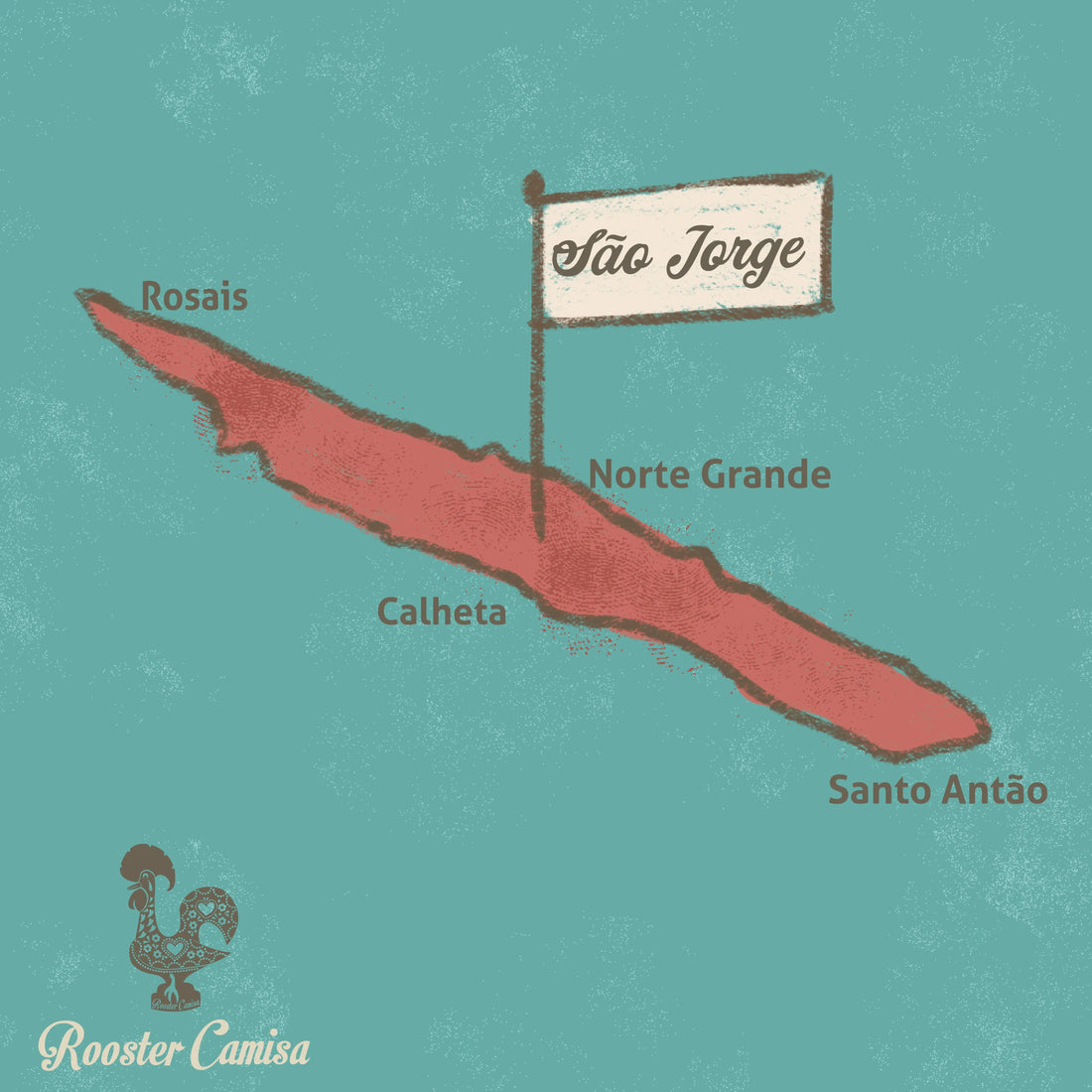As our travels continue to move towards Europe, the next Açores island we have the privilege of visiting is São Jorge. Its distance from the east coast of the U.S. is 3,603 miles, and it's just 30 miles from our last stop, Graciosa. Those who are fortunate enough to visit this island not only say they find some of the breathtaking views seen anywhere, they’re adamant that São Jorge is their new favorite Açores island.

São Jorge Boat and by Airplane
Home to approximately 9,500 residents, São Jorge is a dramatic-looking, elongated island with a length of 35 miles but a width of only five miles. Despite that, it is accessible by airplane using its airport that was inaugurated in 1983. It’s also accessible by using the ferry system that services the other central group of Açores islands.

The Island that Decorated Itself
I asked a native of São Jorge what he’d like others to know about his beloved home island, and he said, "It's so beautiful, it looks like it decorated itself.” After seeing some of the pictures he shared, I’ll fully agree with that. One exciting thing about this São Jorge is that it has a mountain range that stretches across most of the island. While plateauing at the inner part of the island, the mountain range’s ridge gives way to high, steep cliffs that either end in a straight drop into the ocean or into small flattened areas at sea level. When standing at the top of a ridge that doesn’t drop down into the ocean, you’re likely to get a spectacular view of one of São Jorge’s small towns at the end of something called a fajã.
A fajã is a permanent debris field caused by collapsing cliffs. Many of the fajãs have lagoon-like areas resulting from the water with inlets but no outlets. There are 40 fajãs on São Jorge with some of the island's towns located next to them. Because of the rich biospheres created around fajãs, each town is surrounded by picturesque splashes of color due to the wide variety of wildflowers. Almost any hike taken on the streets or paths that start at sea level and steadily climb upwards toward the top of the island will include opportunities to see large numbers of wildflowers and greenery. São Jorge has the distinction of being a UNESCO Biosphere Reserve. It’s easy to see why.
Eat, Drink and Relax
Is it possible to talk about São Jorge and not talk about its world-famous cheese? Of course not. While some of the other islands make cheese, the best known is queijo do São Jorge (cheese from São Jorge). But visitors do not live on cheese alone, so the island has much more exquisite food to offer.
São Jorge’s gastronomical offerings include fresh fish and seafood as main stars, of course. Restaurant meals always include São Jorge cheese along with freshly baked bread. There are several great choices when eating in São Jorge but I learned that the following ones are exceptional choices when wanting authentic food prepared by local families. Caseiro in Topo is a restaurant owned by a young family with three sons. The family, and their freshly prepared authentic Açorean food, hold the hearts of their town. Another small and authentic restaurant to try is O Branquinho in Rosais. For dining with a spectacular view, Urzelina is the restaurant you want to combine the freshest seafood with the best view.
Whether it’s at the start of the day or at the end of a wonderful meal, you must drink coffee while visiting São Jorge. It's the only place in Europe where you'll be drinking coffee made from beans grown locally. This island is home to the only coffee bean plantation in Europe. O Perneta is a coffee shop serving amazing coffee all day and offering karaoke at night. By accompanying that coffee with Espécies de São Jorge (Spiced Cookies) and you may never want to leave.

Cheese That’s the Real Deal
Queijo de São Jorge traditionally is tangy, semi-hard, and made of raw cows’ milk. A true statement is that Queijo de São Jorge is as deliciously rich as the cliffs of São Jorge are amazingly steep. This robust, aged cheese is ripened between three and seven months before being sold in the market. It's easy to understand why this cheese is so famous; it's had the same consistent texture and depth for the last 200 years using carefully guarded recipes!
São Jorge is estimated to have twice as many cows as humans because cheese production accounts for roughly 70% of the island's economy. Each year, cows produce 30 million liters of milk with every drop of it used in the product of São Jorge’s famous cheese.
The island is home to some of the best master cheesemakers in Europe. Queijo de São Jorge is special for several reasons. Because of the island's unique geography, it's free-roaming cows have access to a combination of native grasses and herbs found only on São Jorge. That, coupled with the particular cheese processing methods, creates the delicious flavor of the legendary queijo do São Jorge. You can visit the three cheese-making factories on the island to appreciate the craftsmanship that goes into this cheese.
There’s no other island like São Jorge. The characteristics that make it dramatically beautiful yet delightfully quaint aren’t found anywhere else. It's no wonder visitors often say that the time they spent on the island was done in a state of awe and one that they'll remember forever.

